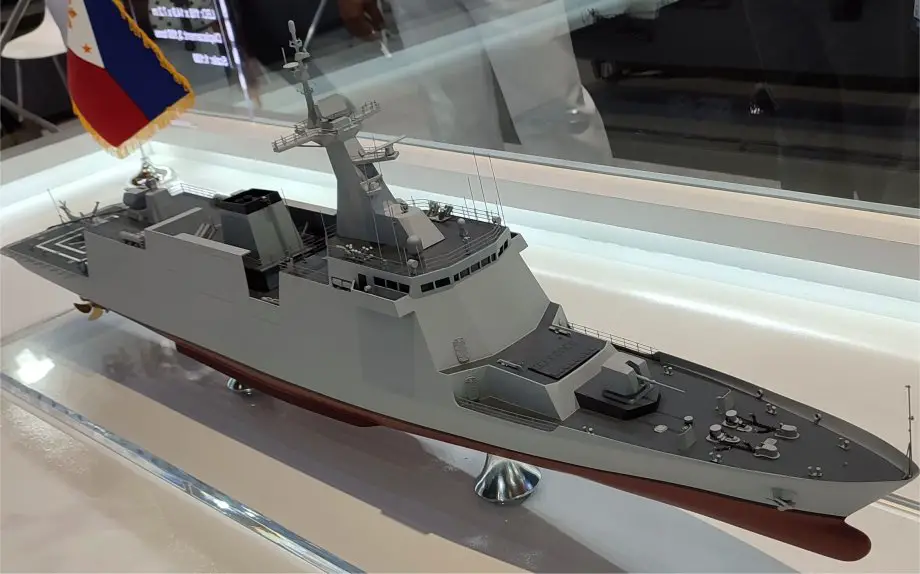Breaking news
Philippine Navy starts training program for future South Korean made corvettes.
According to information published by the Philippine News Agency on March 12, 2024, the Philippine Navy has initiated training for its personnel on the operation of two corvettes being constructed in South Korea. These naval vessels are part of the country's efforts to modernize its fleet and are expected to be delivered in the next two to three years.
Follow Navy Recognition on Google News at this link
 A model of the HDC-3100 corvette. (Picture source: rhk111)
A model of the HDC-3100 corvette. (Picture source: rhk111)
These particular vessels, being built at the HD Hyundai Heavy Industries shipyard in Ulsan, South Korea, are equipped for anti-air, anti-surface, and anti-submarine warfare.
The crew members designated for these ships will undergo training in South Korea with the manufacturers to ensure they are fully prepared to operate the new assets. The first of these corvettes is scheduled for delivery in 2025, with the second following in 2026. The contract for these ships, valued at PHP28 billion, was signed in December 2021 as part of the navy's modernization initiative.
About the HDC-3100 future corvette
The vessel has a displacement of 3,200 tons and a length of 118.4 meters. Its beam stretches to 14.9 meters, and it has a draft of 3.7 meters, coupled with a depth of 7.2 meters, ensuring stability and seaworthiness.
Powered by four MTU-STX diesel generators, its propulsion system features a combined diesel and diesel (CODAD) arrangement, comprising four MTU-STX diesel engines. This enables the ship to reach speeds of 25 knots at 85% MCR, with a range of 4,500 nautical miles at 15 knots and an endurance of 20 days.
The ship is equipped to carry two RHIBs for boats and landing craft, though its complement remains to be confirmed. Its advanced sensors and processing systems include the Hanwha Systems Naval Shield Baseline 4 Integrated Combat Management System, EL/M-2258 ALPHA S-band 3D AESA multifunction radar, and various other systems for identification, navigation, fire control, and electronic warfare. The inclusion of both medium-to-low frequency active/passive hull-mounted sonar and a towed array sonar system enhances its underwater detection capabilities.
In terms of electronic warfare and decoys, it utilizes RESM and CESM for electronic support measures, along with a countermeasures dispensing system that includes mortar-type decoy launchers. The vessel also features structural countermeasures designed to minimize its radar cross-section, infrared signature, underwater radiated noise, and magnetic signature.
Armament on the ship is comprehensive, featuring a 76mm Oto Melara Super Rapid gun, a 35mm close-in weapon system, anti-ship cruise missiles, SEA torpedo launchers, a 16-cell forward vertical launching system, and heavy machine guns.
This is supplemented by aviation facilities, including a flight deck and hangar capable of accommodating a 10-12 tonne naval helicopter, ensuring its operational versatility in various maritime scenarios.


























